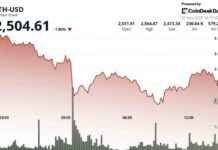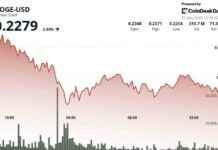Tether’s $770M XAUT Backed by 7.7 Tons of Gold in Swiss Vault, Says Company
So, like, Tether, you know, they said they got this XAUT thing backed by a whole bunch of gold, like 7.7 tons of it, all chilling in a vault in Switzerland. And get this, it’s worth a whopping $770 million as of April 28, according to their first attestation under El Salvador’s financial rules.
The CEO, Paolo Ardoino, he’s all pumped about it, saying how XAUT is gonna be the go-to gold token for regular folks and big shot institutions alike. Like, central banks are hoarding gold like it’s going out of style, but XAUT is here to stay, you know?
Each XAUT token is like a little piece of gold, certified and all that jazz, representing one troy ounce of the shiny stuff. Tether is all about keeping it real, with strict controls and audits to make sure everyone knows their gold is legit.
It’s all happening at a time when gold is all the rage, with investors worldwide turning to it as a safe bet against all the crazy stuff happening in the world. Central banks, especially in BRICS countries, are buying up gold like there’s no tomorrow, stacking up over 1,044 metric tons in 2024 alone.
Gold prices are through the roof, hitting record highs left and right in 2025. It’s up 27% since the start of the year, trading at a hefty $3,343 per ounce. Tether is like, “Hey, our XAUT is the real deal, not like those other guys with their paper gold.”
The article was put together with a little help from AI tools, but don’t worry, a real live human checked it over to make sure everything was on point. So, yeah, that’s the scoop on Tether’s XAUT and all that gold they got stashed away.
Tom Carreras, the dude who wrote this piece, he’s into markets, bitcoin, and crypto stuff down in Latin America. He’s got a degree in English lit from McGill University and likes to hang out in Costa Rica. Oh, and he’s holding onto some BTC, in case you were wondering.
And hey, just a heads up, there’s this AI Boost thing going on, where a chatbot helped out with the writing. But don’t sweat it, a human double-checked everything to make sure it was all good. So yeah, that’s the lowdown on Tether’s golden adventure.














